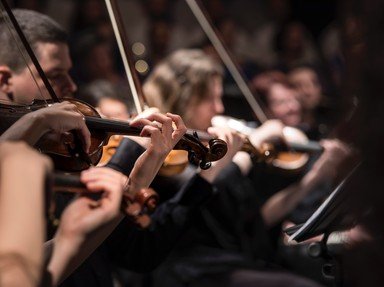Quiz Answer Key and Fun Facts
1. Let's listen to the "Ritual Fire Dance", part of the suite "El amor brujo" ("Love, the Magician"). Who composed this music first as chamber music, then as orchestral suite and finally as a ballet? The piano dominates the work.
2. In a quiz on "fire" in classical music, we should mention a pyre as a method of execution. Who is the heroine of operas by, among others, Arthur Honegger, Michael Balfe or Pyotr Tchaikovsky?
3. Benjamin Britten composed "The Burning Fiery Furnace", a parable for church performance. Which biblical character was *NOT* put in the furnace?
4. Whose first ballet piece was "The Firebird"?
5. Which opera contains the choir "Fuoco di Gioia" (which can be translated as "The Bonfire")?
6. Where does Bizet's heroine Carmen (from the eponymous opera) work?
7. This particular piece of classical music is not regularly performed nowadays. Which French composer created an opera "Prométhée" named after the Greek hero who brought fire to the humans?
8. In which part of the "Ring des Nibelungen" does Wotan encircle Brünnhilde with everlasting fire, so that (in the next episode) only the bravest warrior on earth can reach her? Hint: it is the second instalment.
9. Henry Purcell composed "Dido and Aeneas", in which Dido dies on a pyre. Why?
10. A fairy tale made famous by Mother Goose and by the Brothers Grimm tells us about Cinderella, a girl used to sitting in the cinders after her domestic works. Many composers were inspired by this story. Who created an opera named "La Cenerentola" in 1817?
Source: Author
JanIQ
This quiz was reviewed by FunTrivia editor
agony before going online.
Any errors found in FunTrivia content are routinely corrected through our feedback system.
